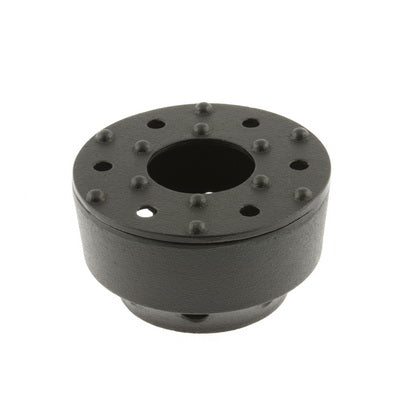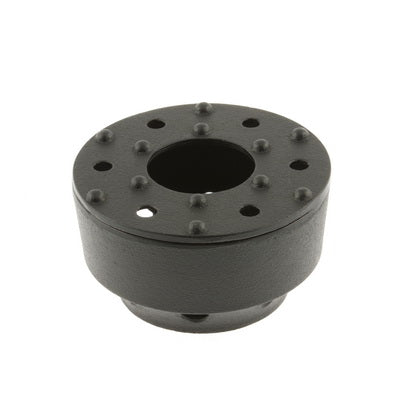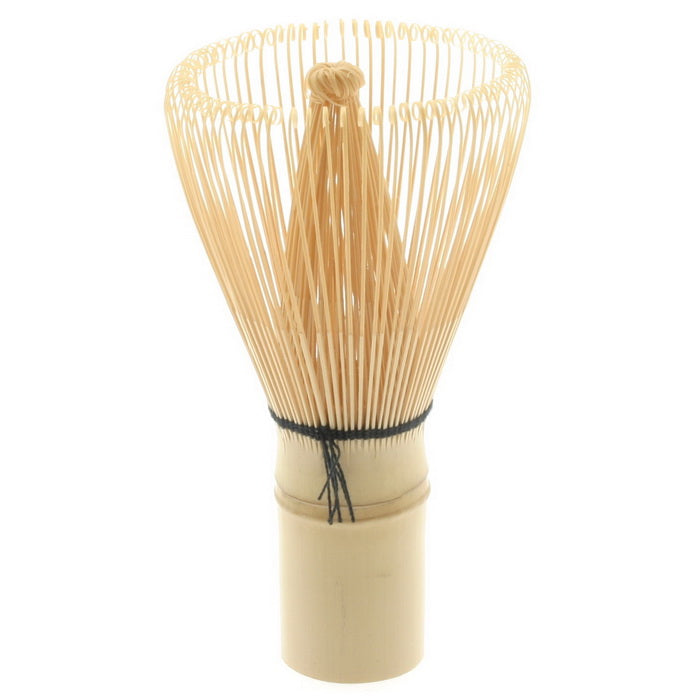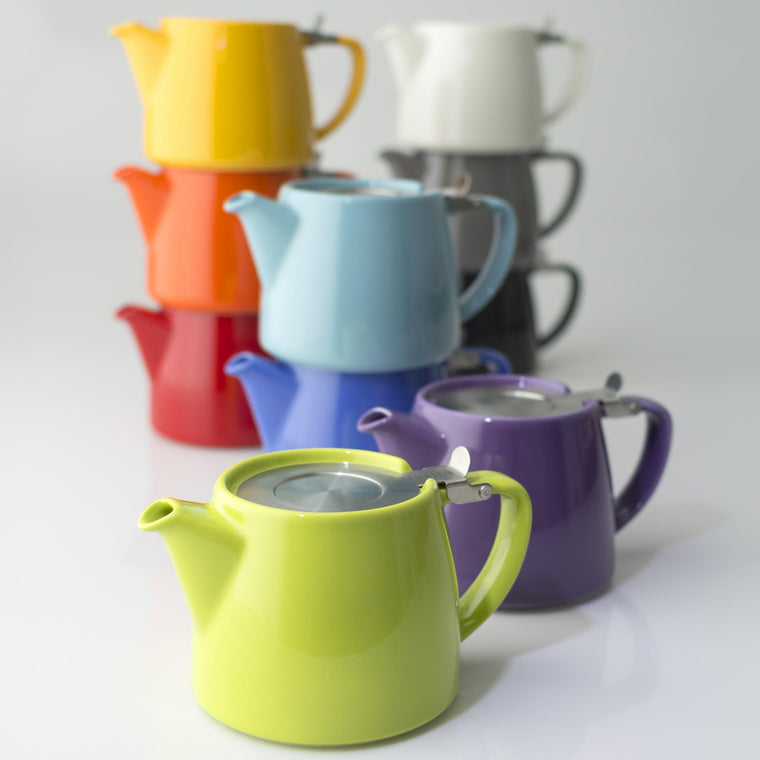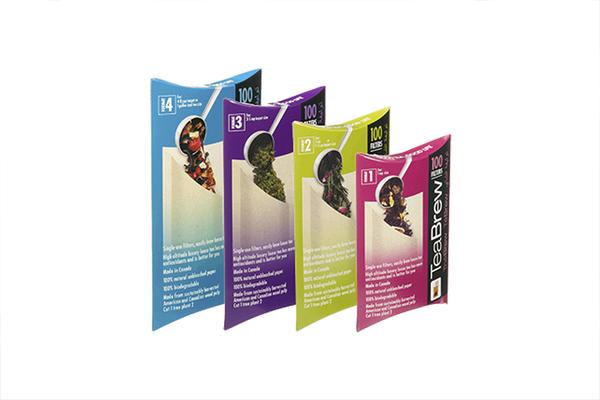Tea-Warmer, Black Hobnail
| Diameter (in.) | 4-3/8 |
| Height (in.) | 2-3/8 |
The abundance of “Satetsu” (sand containing iron), “gantetsu” (rock containing iron), sand, and clay used in the manufacturing of molds and charcoal led to the birth of cast ironware production in the Iwate and Yamagata prefectures of Japan.
Nanbu “Tekki”, or ironware, has been produced in Iwate prefecture for more than 400 years, and is highly regarded by the Japanese for its beauty and ability to retain heat. The history of Nanbu ironware dates back to the Momoyama period (1575-1603) when kettle craftsmen from Kyoto prefecture were invited to the Nanbu area (currently Morioka City), and began casting kettles and tools for the tea ceremony.
Later, craftsmen were brought from many parts of Japan to Mizusawa, about 30 miles south of Morioka. They are credited for both preserving and advancing the traditional skills and techniques of casting. The “namagata” technique became popular in Mizusawa, where prefabricated master molds were used to facilitate ironware production.
The Mogami River and the port of Sakata played a major role in the development of Yamagata as an ironware production center. Rice was transported from the nearby Shonai plain via the Japan Sea to Western Japan, and returning ships were often loaded with bulk materials such as wazuku (pig-iron produced by the traditional Japanese method) from Izumo.
It is said that the success of the development of tetsubin (cast iron tea kettle) manufacturing in the Morioka area essentially paved the way for both Mizusawa and Yamagata to expand their production as well, during the Taisho period (1912-1926).

